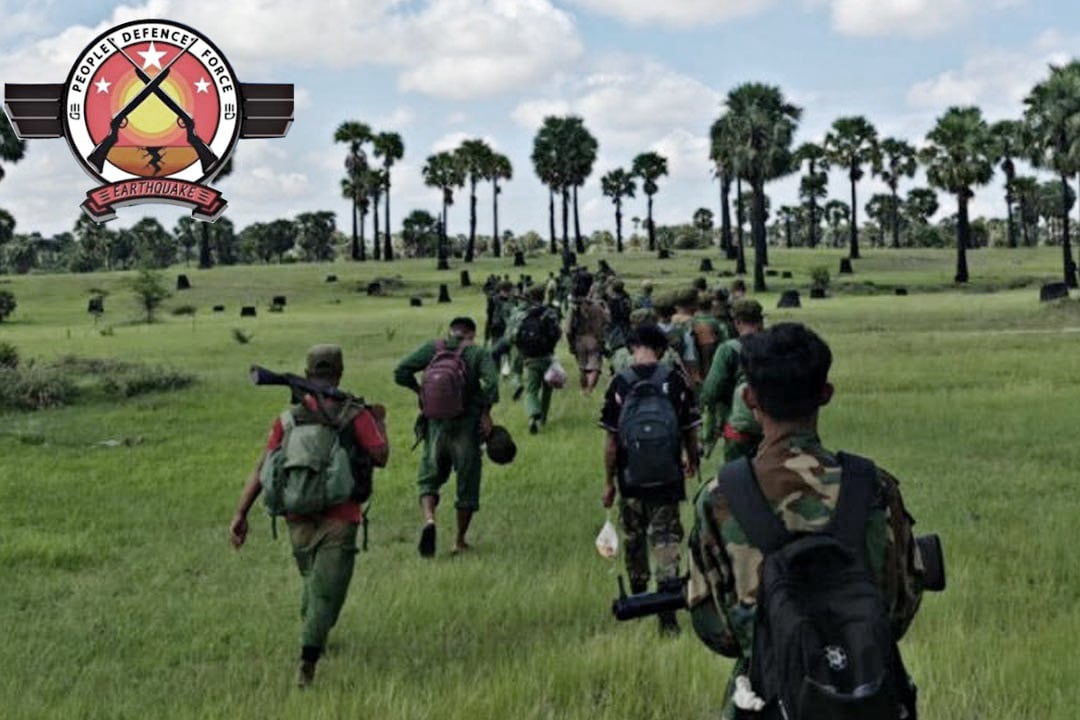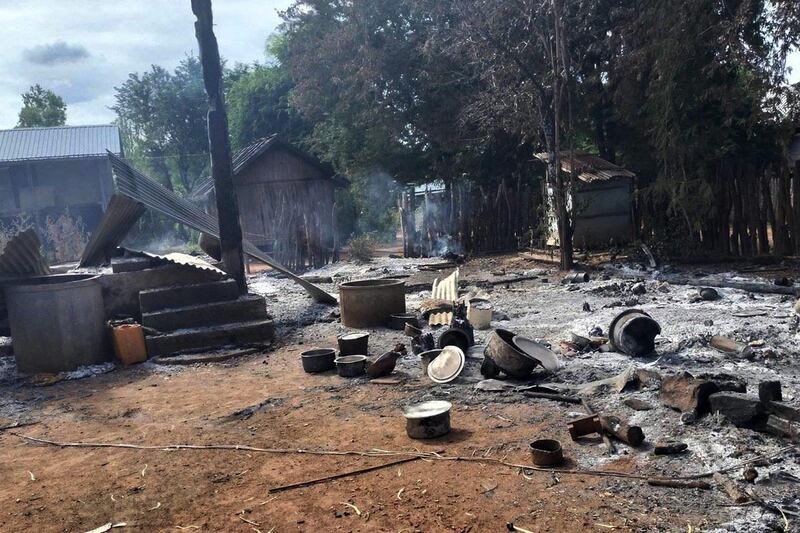Residents say around a third of homes were destroyed in one Pwintbyu township village.
By RFA Burmese
2025.02.03

Read RFA coverage of this story in Burmese.
Some 20,000 civilians have fled a township in central Myanmar’s Magway region amid three days of heavy fighting between rebels and junta troops that destroyed around one-third of area homes, residents said Monday.
The intense combat in the heartland township of Pwintbyu is the latest sign that the junta is losing ground as the civil war enters its fourth full year.
People displaced from Pwintbyu told RFA Burmese that fighting worsened on Saturday, prompting them to flee from 10 villages in the township, which lies next to the Rakhine mountain range.
A resident of one of the villages — Ma De — told RFA that they fled their home on Saturday and now “face many difficulties.”
“Sadly, we had to leave behind our parents, who are over 80 years old, as they refused to flee with us,“ said the resident who, like others interviewed for this report, spoke with RFA on condition of anonymity due to security concerns.
”Very few people remain in our village. Both young and old now live in temporary huts on farms, and we’ve been building makeshift shelters ourselves.“

He said “almost everyone in the villages had fled,” and that, for livestock farmers, feeding their left-behind cattle “has become a challenge.”
“After the fighting broke out, about 100 out of 300 houses in Ma De village were burned down,” he said. “The harvested rice and sesame crops were also destroyed by fire.”
Residents said that junta troops have been stopping displaced civilians at checkpoints in the region.
Junta troops advance
The fighting came after junta infantry battalions No. 253, 254, and 255 advanced on Pwintbyu in three columns from their base in Salin township, around 27 kilometers (17 miles) to the north, according to an official with the anti-junta People’s Defense Force, or PDF.
Anyar Thar, the news and information officer for the Minbu District PDF, told RFA that during the fighting on Saturday, junta troops shot and killed a young man from Ma De village.
Around 20 junta soldiers were killed in the recent clashes, he said, although RFA was unable to independently confirm the claim.
PDF groups involved in the fighting included those from Myaing and Pauk townships, the No. 6 and 4 battalions of Minbu, the JOKER Guerrilla Force, the Young Force PDF, the Sidoktaya PDF and the Earthquake PDF.
The spokesperson for the Earthquake PDF, who also declined to be named, told RFA that rebel forces jointly carried out attacks on police stations in Pwintbyu’s Me Za Li village and Minbu’s Let Pa Taw village, as well as “other military columns.”
“We dropped bombs from drones on the police station and then ambushed their reinforcement column on the way,” he said. “At the moment, the fighting is still intensifying.”
A resident of Magway with ties to rebel forces in the region said that the groups are “striving to liberate Magway region from the military junta,” suggesting that “victory is within our reach.”
Rebel sources say fighting is intensifying in the Magway towns of Pa Dan, Mindon, Saw, Gangaw, and Htee Lin, near the borders of Rakhine and Chin states.
Attempts by RFA to contact Myo Myint, the junta’s social affairs minister and spokesperson for Magway region, went unanswered Monday.
Translated by Aung Naing. Edited by Joshua Lipes and Malcolm Foster.
